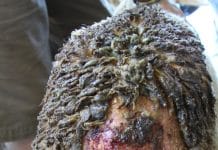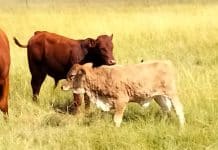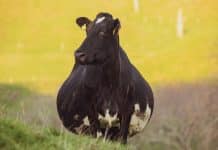Sean Hobson’s grandfather, Arthur Blake Hobson, once said about farming: “The way people judge you is by your integrity. Integrity is everything.”
Sean Hobson is the sixth generation of Hobson to farm on Martyrsford in the Jansenville district of the Eastern Cape. He farms with sheep, cattle and Angoras. The latter can be traced back all the way to the first Angora studs that were established in South Africa.
Across the waters to the south
To escape severe religious persecution, Sean’s ancestors left England in the 1820s to come to South Africa – they were Methodists while the predominant religion at the time was The Church of England.
Sean shares some of the information that they keep in their archives. “We consider David and William Carey Hobson to be the two founder members of our family in South Africa. According to our records, the two brothers, who joined the 1820 settlers, were sent to South Africa by their mother who was quite a formidable matriarch.
“They arrived in Algoa Bay and travelled on to Grahamstown where they took up farming. In the late 1820s they relocated to the Karoo and settled in this area. The Hobson family then spread out and has farmed ever since.
“Martyrsford was established in 1837 and my family have been living and farming here since then, constantly working and improving with each generation.”

Livestock management
Apart from their Angora stud, Sean and his father, AB, also run a Merino sheep flock and some cattle. “We enjoy our sheep and are proud of the wool we produce. We also farm with Bonsmaras and have begun to cross them with Tuli bulls due to their hardiness under drought conditions.”
With regard to their utilisation of available veld types, Sean believes in a balanced approach by understocking to a small degree. His reasons are simple: This area experiences more dry than wet seasons which allows for a measure of veld longevity going into a dry spell. “Our veld is quite sweet, and we enjoy farming in this area. Almost all the veld species on Martyrsford are palatable and there is a wide variety of veld plants and grasses available to the livestock.”
Oldest surviving family stud
The Martyrsford Angora stud was one of the first studs established in South Africa and is currently the oldest original family owned stud in the country. “We have been consistently breeding Angora goats for almost 150 years and I feel very privileged to be the sixth generation to farm on Martyrsford. I’m hoping to continue that legacy and improve all levels of farming wherever possible.
“Our Angora stud was established in 1871. Our primary focus is to add to and help improve the genetic pool within our industry. We are extremely passionate and proud of what we have achieved within our stud.”

Steering clear of trends
Martyrsford’s breeding philosophy has always been a ‘middle of the road’ approach, avoiding trends as far as possible. Sean explains why that is the case. “We have always strived to produce a good productive commercial animal. When you chase trends, you often lose focus of your core breeding philosophy.
“We focus on breeding a good commercial animal that can offer quality genetics and economic value to any stud or commercial breeder in the country. Our breeding philosophy has always been to breed a well-built animal with good reproductive traits and mohair with good length, solidity and yoke in the fleece.”
Sean explains that the solidity and yoke in the fleece, protects the fibre from dust and debris picked up in the arid Karoo conditions. In addition, it adds weight to the fleece come shearing time.
Over the years they have found that consistency of fleece pays off in the long run. “We like to know that our clients can expect the same level of consistency and quality year after year at ram sales, as well as when we sell our fibre.”
The diamond of natural fibre
As with any other industry, the mohair industry experiences its fair share of ups and downs. One such memorable high point was the mohair boom in the 1980s. “If you take all the ups and downs over the years into account, we are still in it for the long haul. This is a wonderful industry to be a part of. Angora goats are remarkably suited for our conditions and with proper management are an excellent addition to any farming operation.”
Sean states that mohair is known as the ‘diamond fibre’. “It is a highly sought-after fibre for the manufacturing of high-end clothing, since it takes on dyes beautifully. Mohair is known for its wonderful lustre. It breathes very well, keeping you cool in warm weather and warm in cold weather. Mohair also blends very well with other fibres such as wool, cashmere and silk.”
Finally, while the hot Karoo sun blazes down on the flowering veld of Martyrsford, Sean captures the essence of South Africa’s mohair industry. “Mohair is a superb and versatile product. It is an honour to know that South Africa is the biggest mohair producing country in the world, with production roughly 55% of the world’s mohair.
“Our mohair industry is smaller than that of some of the other livestock breeds, but it adds to the charm and personal nature of what we do. I think the growth of the Angora goat as a breed has been very exciting to watch over the last few years. South Africa produces the best mohair in the world and that is something we can be very proud of.” – Carin Venter, Stockfarm
For more information, contact Sean Hobson on 079 057 0557. Photographs by Kerryn Ross, Farm Girl Photography.









